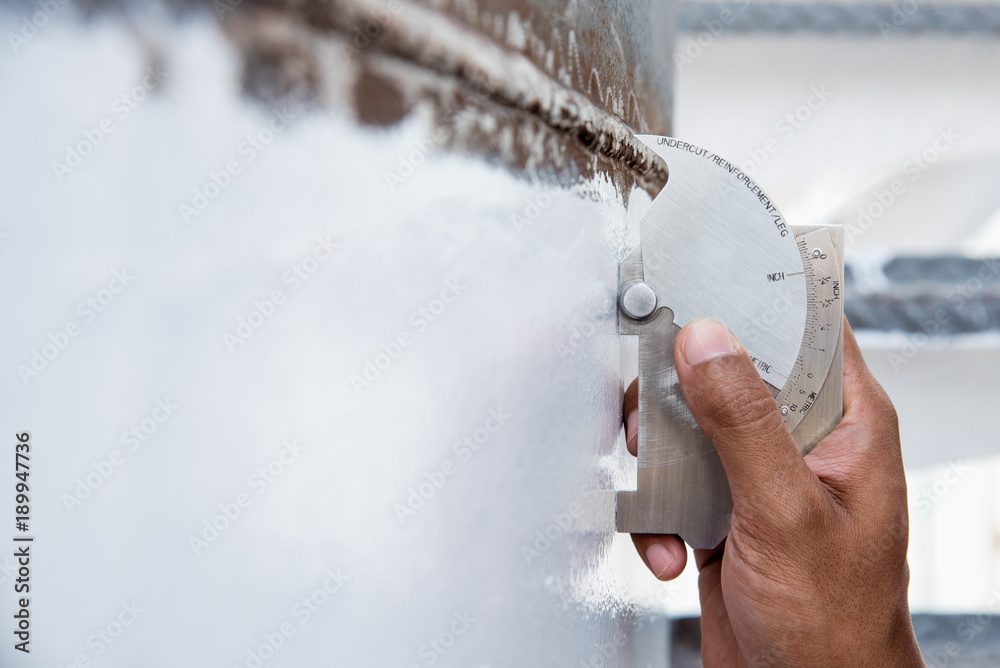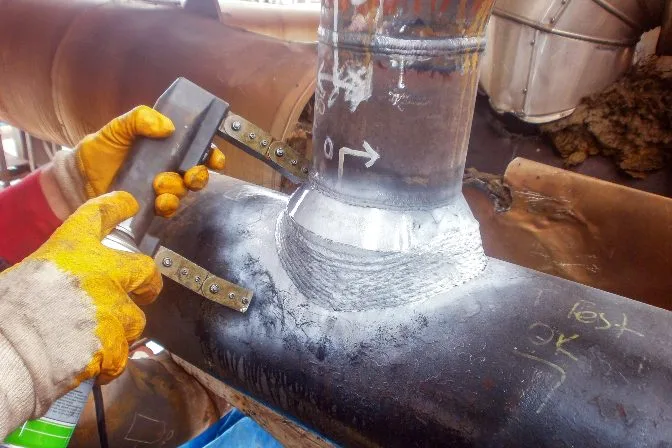How to Make Sure Conformity with Tank Welding Inspection Requirements
How to Make Sure Conformity with Tank Welding Inspection Requirements
Blog Article
A Thorough Summary of Container Welding Assessment Requirements and Methodologies for Improved Weld Quality and Efficiency
The relevance of welding assessment requirements in the production of storage tanks can not be overstated, as they work as the backbone for guaranteeing weld honesty and functional integrity. Different assessment strategies, consisting of visual assessments and progressed non-destructive testing approaches, are vital in identifying prospective problems that can endanger performance. Sticking to regulatory standards not just improves weld quality however also alleviates the danger of expensive failures. As we explore the subtleties of these methods, it ends up being important to think about how a methodical technique can revolutionize current techniques and result in substantial renovations in outcomes.
Importance of Welding Evaluation Criteria

Welding examination requirements incorporate a range of requirements, consisting of material requirements, welding procedures, and certifications of workers involved in the welding process. By enforcing these criteria, companies can methodically identify and remedy possible issues, therefore reducing the possibility of expensive repairs or catastrophic failings. Strenuous evaluation techniques cultivate a society of liability and precision, motivating welders to maintain high degrees of workmanship.

Common Welding Inspection Strategies


Ultrasonic Testing (UT) is one more prevalent strategy, utilizing high-frequency sound waves to find internal problems that may not be visible externally. This approach is especially efficient for recognizing gaps or inclusions within the weld metal. Magnetic Particle Examining (MT) is likewise commonly utilized, especially for ferromagnetic products, as it discloses surface area and near-surface defects with the application of electromagnetic fields and ferrous bits.
Furthermore, Fluid Penetrant Testing (PT) detects surface-breaking defects by applying a penetrant to the weld and afterwards using a developer to attract out the penetrant. Each of these strategies adds to a comprehensive evaluation approach, making sure that welds fulfill the rigid high quality requirements required in container building and construction.
Governing Criteria and Compliance
Governing requirements and compliance are essential components in making certain the security and integrity of welded structures in storage tank construction - Tank Welding Inspection. These criteria offer to establish minimum needs for material buildings, welding find more info treatments, and evaluation methods, thereby lowering the danger of architectural failings and boosting total performance
Secret companies, such as the American Society of Mechanical Engineers (ASME) and the American Welding Culture (AWS), supply standards that are commonly taken on in the sector. Compliance with these requirements not just makes sure adherence to finest practices however additionally fulfills legal and contractual commitments, safeguarding the passions of stakeholders.
Regulatory bodies usually mandate adherence to specific codes, such as ASME Code Section IX for welding certifications and API 650 for bonded containers. These codes describe requirements for welding strategies, qualifications of workers, and testing methods to confirm weld integrity.
Normal audits her response and evaluations are important to keeping compliance, as they help recognize discrepancies from developed standards. Non-compliance can lead to considerable charges, task hold-ups, and safety hazards. Therefore, a durable understanding of regulative requirements and a dedication to compliance are critical in accomplishing top quality and long lasting bonded tank structures.
Non-Destructive Evaluating Methods
Just how can the integrity of welded frameworks be assured without causing damages? Non-destructive testing (NDT) methods offer a robust service, allowing inspectors to assess weld quality without endangering the product - Tank Welding Inspection. Among the most usual NDT strategies are ultrasonic testing (UT), radiographic testing (RT), magnetic particle testing (MT), and color penetrant screening (PT)
Ultrasonic testing utilizes high-frequency audio waves to identify interior problems and characterize material residential properties. It supplies accurate measurements and is particularly efficient for thick materials. Radiographic testing involves passing X-rays or gamma rays with the weld, creating pictures that disclose architectural defects such as cracks or voids. This technique is important for evaluating the honesty of complicated welds.
Magnetic bit screening is matched for ferromagnetic materials, where magnetic areas disclose surface area and near-surface gaps. Dye penetrant screening uses a liquid dye to highlight surface-breaking imperfections, making it a reliable technique for non-porous products.
Each of these NDT approaches has unique benefits, permitting detailed evaluations tailored to particular products and welding procedures. By applying these techniques, industries can guarantee the dependability and security of bonded structures, ultimately enhancing total efficiency.
Enhancing Weld Top Quality With Inspection
Effective assessment plays an essential role in enhancing weld top quality, acting as a crucial checkpoint in the fabrication process. By identifying possible issues early, inspections reduce the danger of jeopardized architectural integrity and make sure conformity with industry criteria. Using a mix of visual evaluations, non-destructive screening (NDT) techniques, and mechanical evaluations, assessors can find issues such as porosity, fractures, and incomplete blend.
Implementing a durable evaluation procedure not only improves the total high quality of welds but likewise fosters a society of responsibility amongst welders and fabricators. Regular training and certification of assessment personnel make sure that they are outfitted with the required skills to identify and attend to potential problems properly. This positive strategy minimizes rework and associated expenses, ultimately adding to forecast efficiency.
Moreover, extensive documents of assessment findings offers useful insights into repeating problems, assisting in continual renovation in welding techniques. By leveraging advanced modern technologies, such as automated ultrasonic testing or digital radiography, weld quality can be boosted via much more specific examinations. Finally, an extensive inspection procedure is indispensable in achieving high-grade welds, making sure security, dependability, and longevity in container manufacture.
Verdict
Finally, the implementation of strenuous storage tank welding examination requirements and approaches is crucial for making certain weld honesty and efficiency. By utilizing a mix of visual evaluations, find more information non-destructive screening approaches, and adherence to regulatory criteria, companies can properly recognize and minimize possible defects. Fostering a culture of responsibility among welders further improves the high quality of welding procedures. Inevitably, these techniques add to minimized architectural failings, lower repair prices, and improved functional effectiveness within the sector.
Report this page